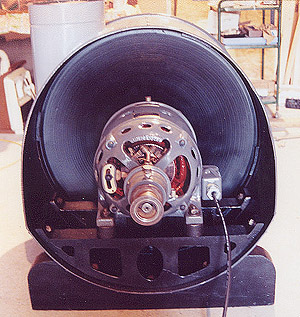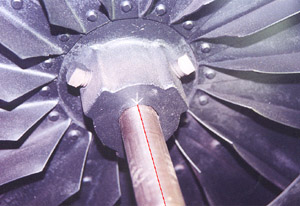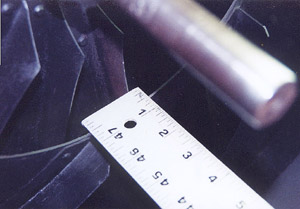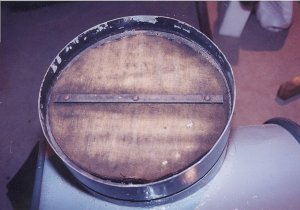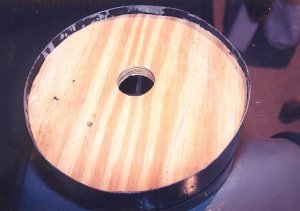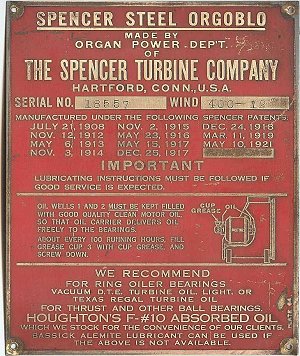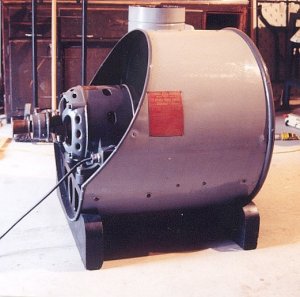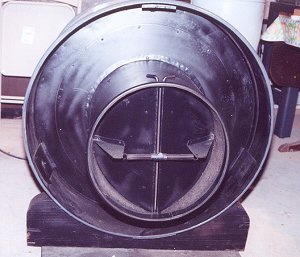
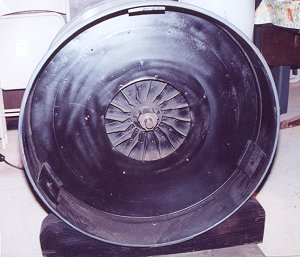
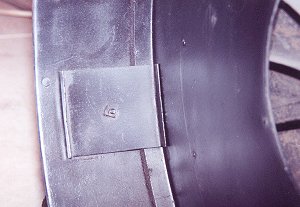
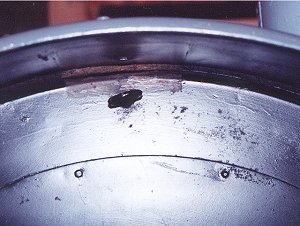
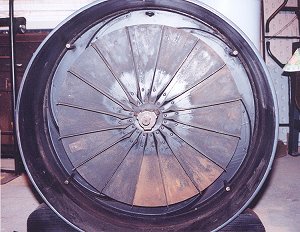
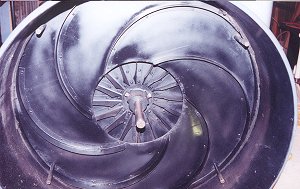
You will now see the seperating plate that goes between the stages (picture divider.jpg). This divider is removed the same as the previous plate. Find the retaining ring and pull hard. Keep doing this until all of the impellers and divider plates have been removed. This single pressure blower has only 2 stages that are identical. On the blowers that have multiple pressures the stages could be different. Mark them so that they are placed back in the same order. The sperating plate has "guiding" fins that help steer the air into the next stage. These will tell you the blower rotation. As the fins spiral into the center, they spirial in the direction of the shaft rotation. On this blower the direction is clockwise from the motor end.
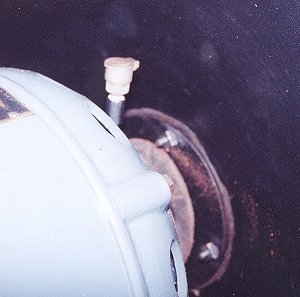
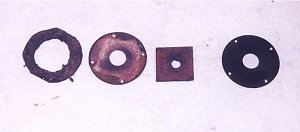
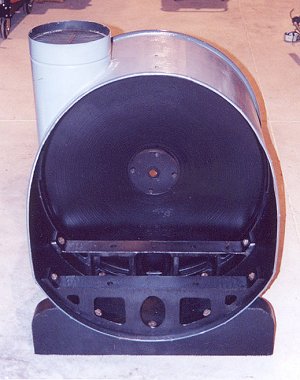
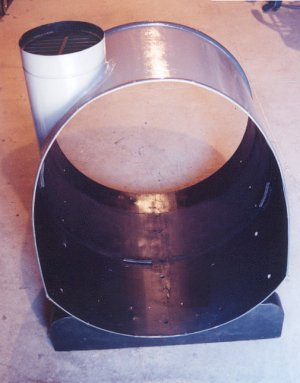
Scrub the stage dividers and repaint them. Check the blades on the dividers for loose rivets and make sure they are not bent or damaged.
